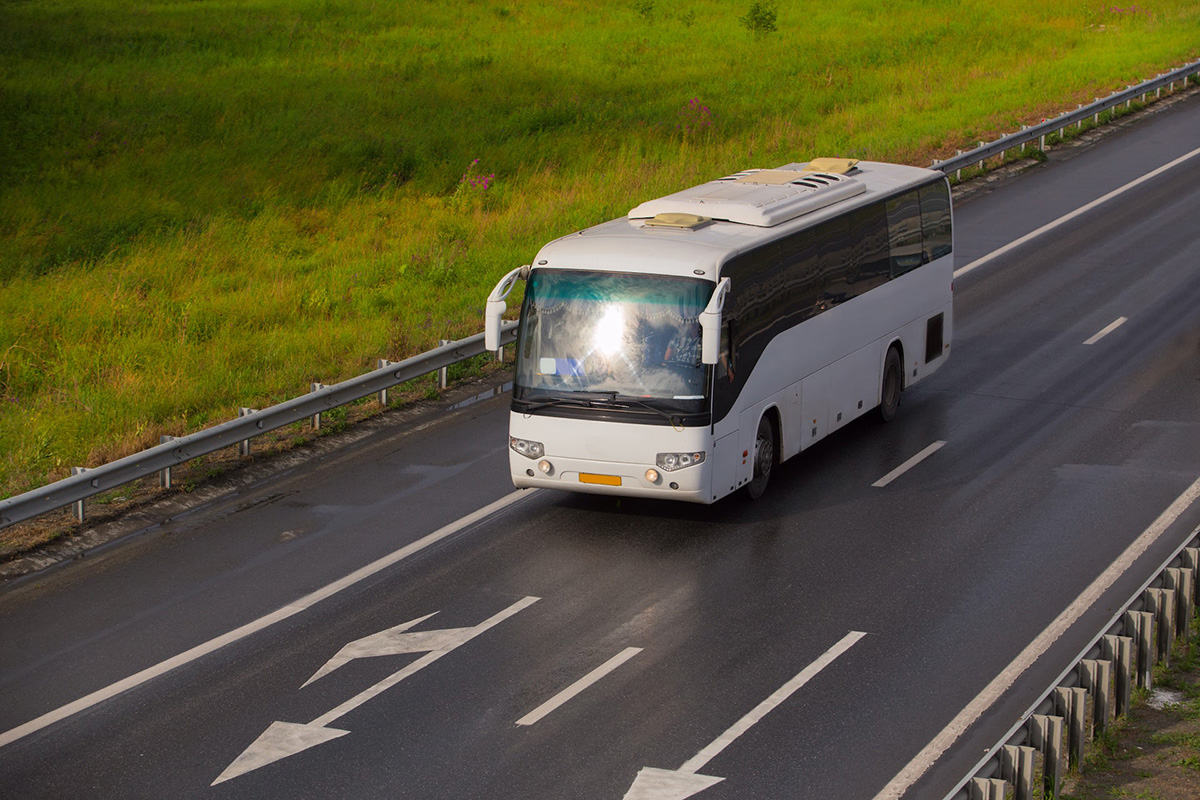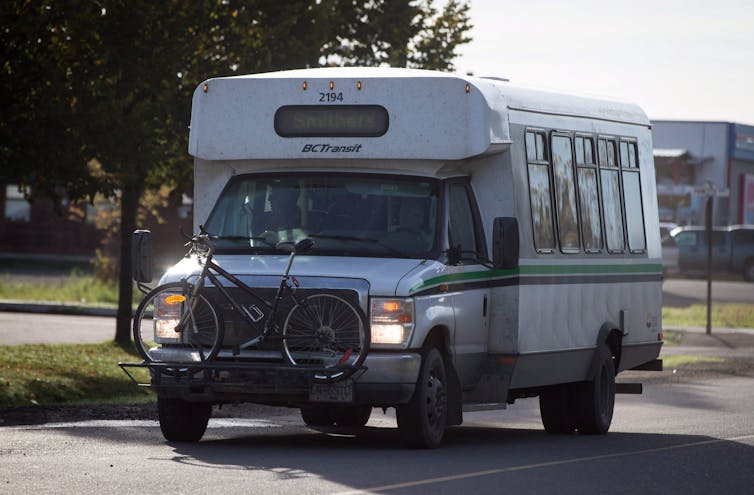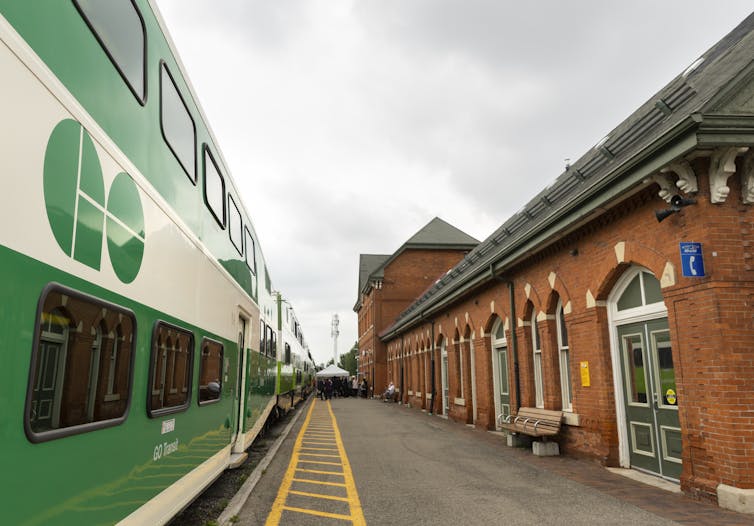
Why rural Canadians need public transit just as urgently as suburbanites
There is a continuing misunderstanding of rural realities by policymakers. Ultimately this puts transit out of reach for many rural areas.
By Sarah-Patricia BreenTransportation within and between Canadian communities is frustrating at best. At worst it’s impossible.
BBC’s Race Across the World shows contestants trying to make their way around British Columbia without access to rental cars or planes. Limited transit options leave contestants frustrated, reliant on hitch-hiking and costly taxis.
The show loses its entertainment value when viewers have to watch contestants struggle every day to find transportation — especially rural viewers for whom this daily challenge is all too routine.
Even so, compared with the rest of the country, rural B.C. actually has a large number of local transit options, as well as some longer distance inter-community services.
BC Transit works with local governments and First Nations to deliver transit services. That’s unique in Canada and partly accounts for the relatively large number of rural public transit systems in B.C.
Transportation in rural Canada is an important issue. It’s also poorly understood, leading to ongoing policy failures and solutions that miss the mark.
Rural transit needs
Not all people living in rural areas have personal vehicles. It’s also a mistake to assume that regular, shorter trips happen within a single community. Inter-community travel is both long haul (occasional) and short (daily).
Personal mobility is critically important to accessing basic services like education and health care, as well as for employment, shopping and recreation.
Transit can increase available markets and workforce, make communities more attractive to potential residents and reduce greenhouse gas emissions. In short, the benefits of accessible, affordable public transit in rural communities are economic, social and environmental.
Despite these benefits, rural communities across Canada struggle to establish and maintain transit systems. They face barriers different from urban areas, as well as different from each other. In a recent study, my fellow researchers and I identified seven types of rural transit barriers.

All rural transit systems are likely to face barriers related to cost. This is due in part to their small size, as systems lack the ridership and economies of scale of urban systems. This means they’re less likely to be profitable because the benefits of transit are widespread across communities and society, while the costs are borne by the operator.
Combinations of local factors, like the physical environment, travel patterns and economic structure, also create unique challenges not easily addressed with a traditional, fixed-route bus transit system.
Rural communities need a high level of both human and financial capacity to start and maintain a transit system. Low (if any) potential profit means rural transit is often run by local governments or not-for-profit organizations, which require a high level of both human and financial capacity to start and maintain a transit system.
Limited human and financial capacity in rural places has an impact on the ability to pay both hard costs and operational ones. Nonetheless, the operational costs and their ongoing strain on capacity pose the most significant challenge.
Gaps in our knowledge
There is another issue: gaps within our knowledge base. In a synthesis of rural transit literature in Canada, my fellow researchers and I found three substantial gaps:
-
Research on rural transit is limited.
-
“Rural” is often treated as a single thing, as if all rural communities have the same needs and challenges, contradicting what we know about place-specific barriers.
-
What we know is biased towards larger, urban-adjacent rural communities, as well as towards regions like Ontario and British Columbia.
Overall, our understanding is narrow and incomplete. So it’s no wonder that we see gaps in the policies and programs created based on this limited understanding.

Government initiatives fall short
In early 2023, the federal government announced Canada’s Rural Transit Solutions Fund would be accepting applications for capital projects.
With $250 million over five years dedicated to rural communities, the fund eliminates competition with urban centres. It is flexible in terms of what can be funded by government, and it’s open to innovative ideas. It’s also open to partnerships offering inter-community transit.
The gap is in what it won’t fund. There are no funds related to operations. You can buy a bus or other vehicles, but you cannot lease one for a short-term pilot project. You can’t pay for a driver, or any of the other people needed to design, manage or operate a system.
It is typical of government funding not to cover operational costs. However, given the severity of the rural capacity gap and that it underscores every other barrier relative to rural transit systems, this is a significant issue.
The Rural Transit Solutions Fund is just one example of efforts to bolster rural transit that fall short.
Missing the mark
Other funding announcements, as well as the work of the Standing Committee on Inter-City Transportation by Bus, show there’s a recognition of the need for rural transit and an attempt to take some steps in the right direction.
But there is a continuing misunderstanding of rural realities, particularly relating to available human and financial capacity. Ultimately this puts transit out of reach for many rural areas.
There is a clear need for further research to address rural knowledge gaps. In the interim, decision-makers must be cognizant of gaps and biases.
When it comes to solutions, the differences among rural communities illustrate the need for solutions that are flexible and account for unique rural realities. And if we want the broad benefits of accessible transportation, we need to fund both the buses and the drivers.![]()
Sarah-Patricia Breen, Adjunct Professor, Environment and Sustainability, University of Saskatchewan
This article is republished from The Conversation under a Creative Commons license. Read the original article.

